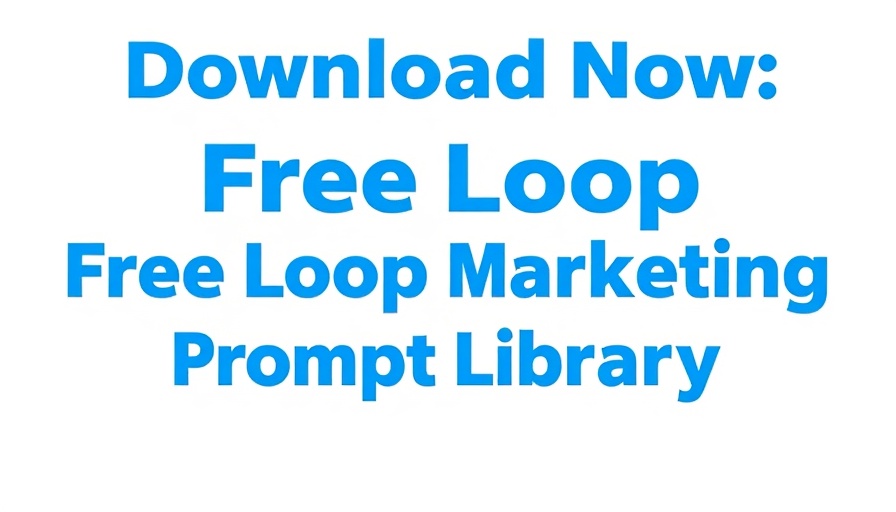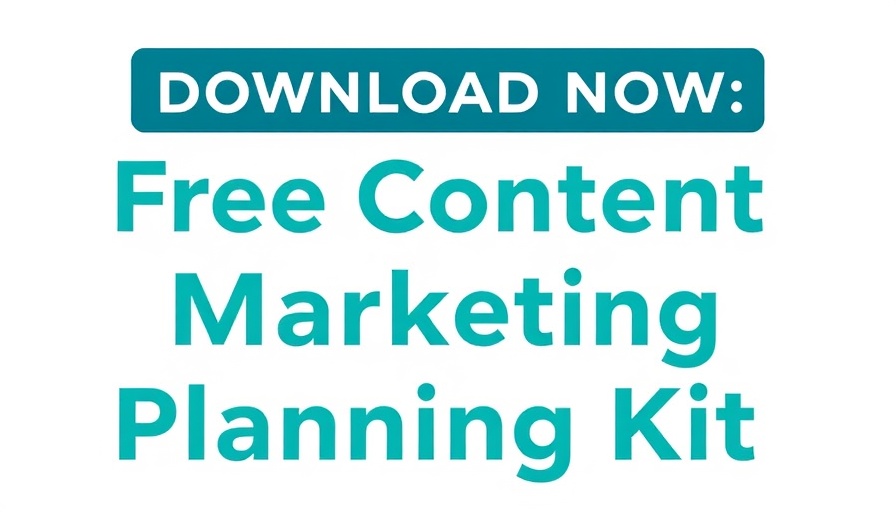
The New Marketing Paradigm: Why Loop Marketing Matters
In the rapidly evolving landscape of digital marketing, the paradigm has shifted dramatically. Traditional sales funnels, which once guided customers through a linear journey from awareness to purchase, now feel outdated. As consumer behavior changes with the advent of AI and social media, marketers are finding new ways to engage audiences. Enter Loop Marketing—a flexible, cyclical approach that leverages both human creativity and AI-driven insights.
Loop Marketing recognizes that today's consumers interact with brands dynamically. Instead of following a fixed route, they discover products through social media, influencer recommendations, and even directly from AI tools like ChatGPT. Thus, marketers must adapt to meet buyers where they are at every stage of their journey.
Understanding the Four Stages of Loop Marketing
At the heart of Loop Marketing are four interconnected stages: Express, Tailor, Amplify, and Evolve. This framework enables marketers to continually learn from customer interactions and refine their strategies over time.
- Express: This first stage emphasizes defining your brand identity and value. Communicating your unique voice, tone, and perspective sets the foundation for all future engagements.
- Tailor: Here, personalization becomes crucial. By utilizing AI to analyze customer data, marketers can craft tailored experiences that resonate with individual consumers.
- Amplify: The goal of this stage is to broaden your reach beyond traditional platforms. It involves distributing tailored messages across multiple channels, ensuring that your brand is present where your audience engages.
- Evolve: The final stage is all about agility. Marketers must use insights gained from previous cycles to make real-time adjustments, ensuring that they constantly refine their strategies and respond swiftly to changes in consumer behavior.
Why This Framework Works in Today's Marketplace
Loop Marketing is operationally distinct from static funnel models, allowing organizations to accelerate their time to market and reduce acquisition costs by personalizing at scale. Research has shown that marketing automation can streamline processes and enhance lead generation—both critical elements of successful customer outreach.
One key advantage of the Loop Marketing strategy is its adaptability. Each cycle builds upon the prior one, enabling marketers to achieve compound growth over time. This continual iteration has proven to be more effective than static campaigns, especially in a market where customer preferences can shift overnight due to technological innovations and new trends.
Common Missteps to Avoid in Your Loop Marketing Efforts
As organizations implement Loop Marketing strategies, they must be mindful of certain pitfalls. One common mistake is attempting to perfect all four stages simultaneously, which can dilute focus and obstruct progress. Instead, teams should prioritize the stage that needs the most improvement. Starting with one stage allows for manageable growth as capabilities develop.
Another pitfall is neglecting the importance of human oversight. Although AI can help analyze vast amounts of data and improve operational efficiency, having skilled professionals review AI-generated content ensures that your brand maintains its voice and authenticity.
Conclusion: Embrace the Future of Marketing
For digital marketers, agencies, and SMBs, embracing the Loop Marketing framework means recognizing that the customer journey today is complex and multi-dimensional. Rather than relying solely on conventional sales funnels, the emphasis should be on creating meaningful, relevant experiences that resonate with consumers. By leveraging modern tools and techniques, such as CRM and marketing automation, organizations can enhance customer acquisition strategies and ensure they remain competitive in an AI-driven marketplace.
If you’re ready to innovate and modernize your marketing approach, consider implementing Loop Marketing to harness the power of both AI and human creativity, ensuring that every customer interaction strengthens your brand.
 Add Row
Add Row  Add
Add 




Write A Comment